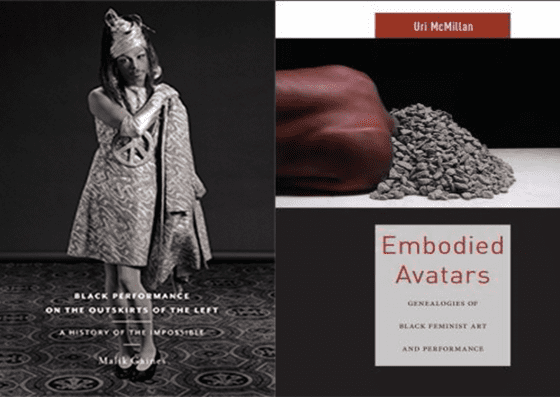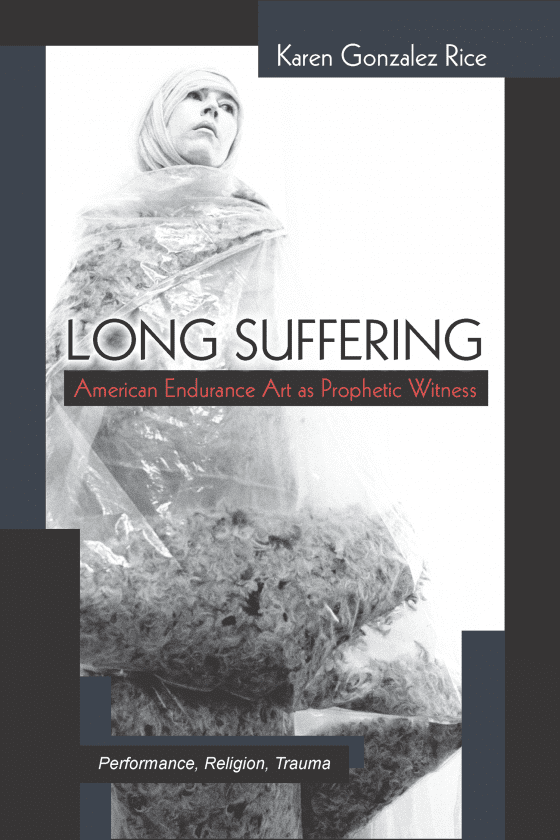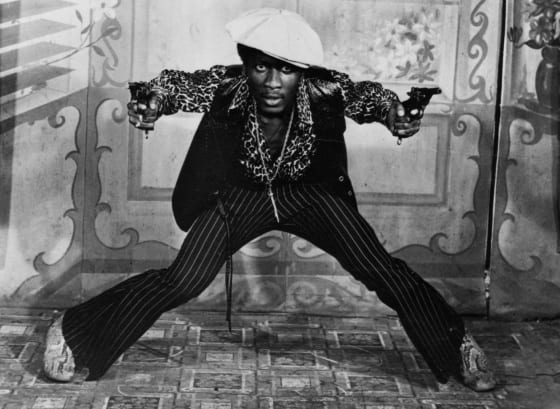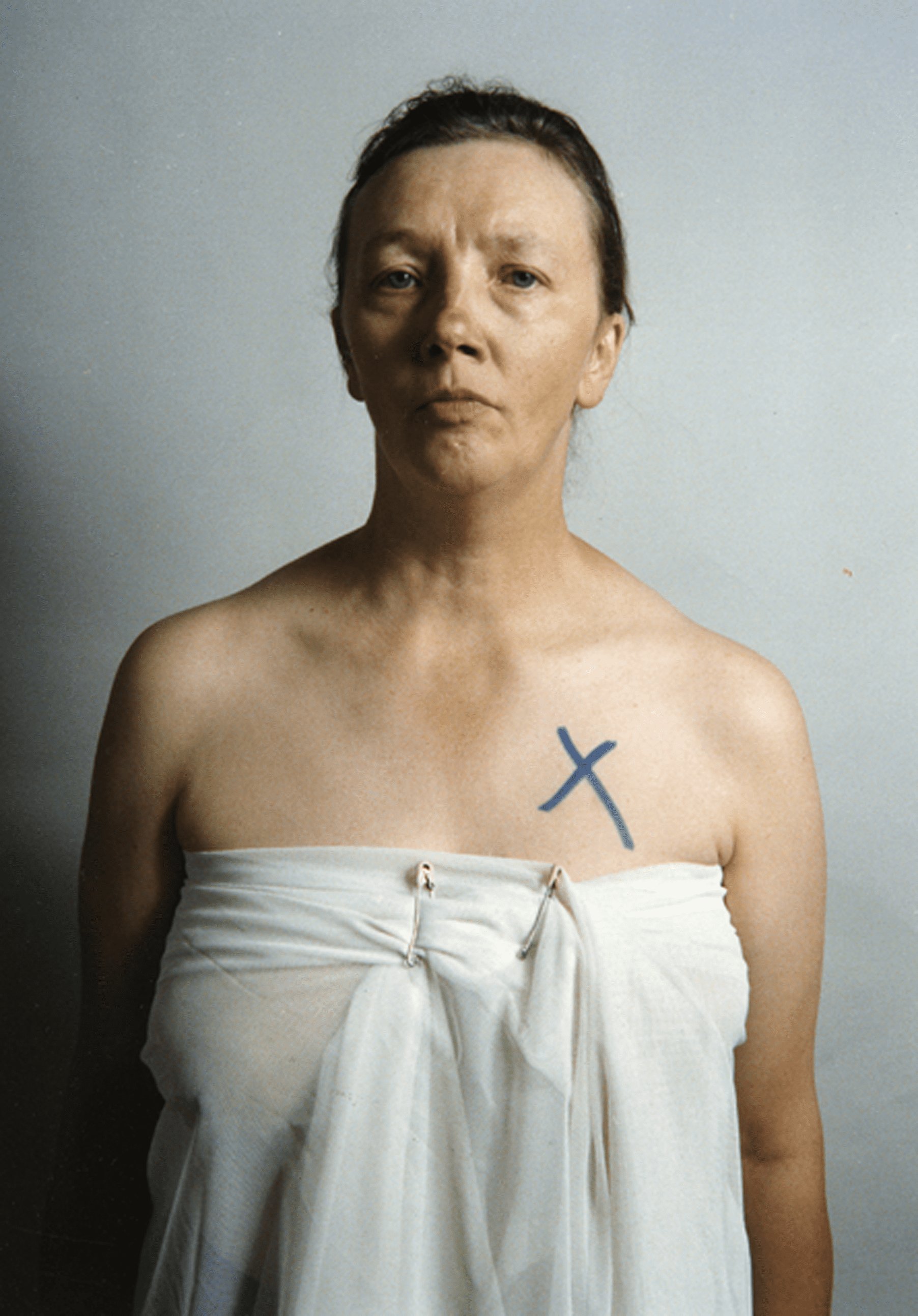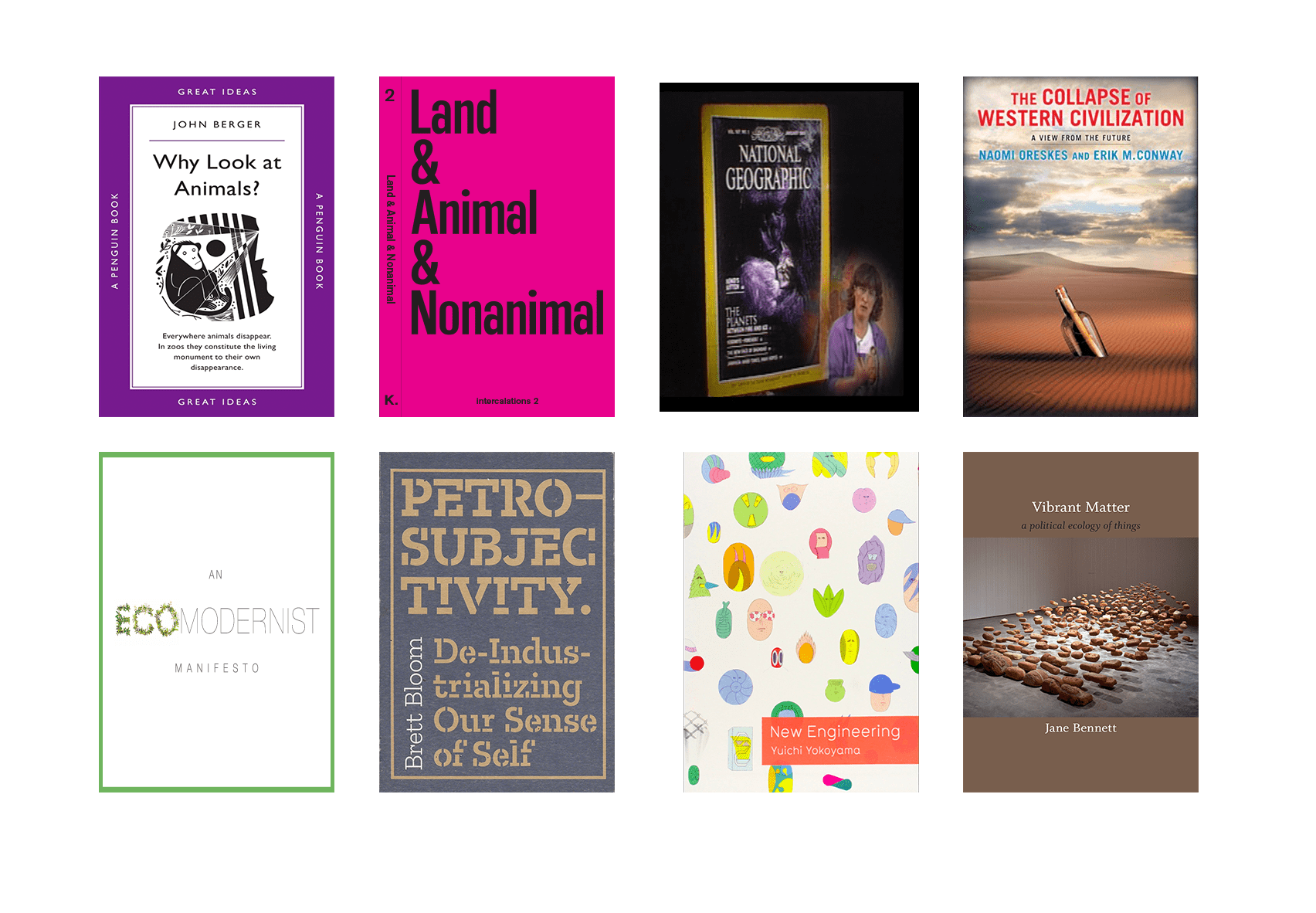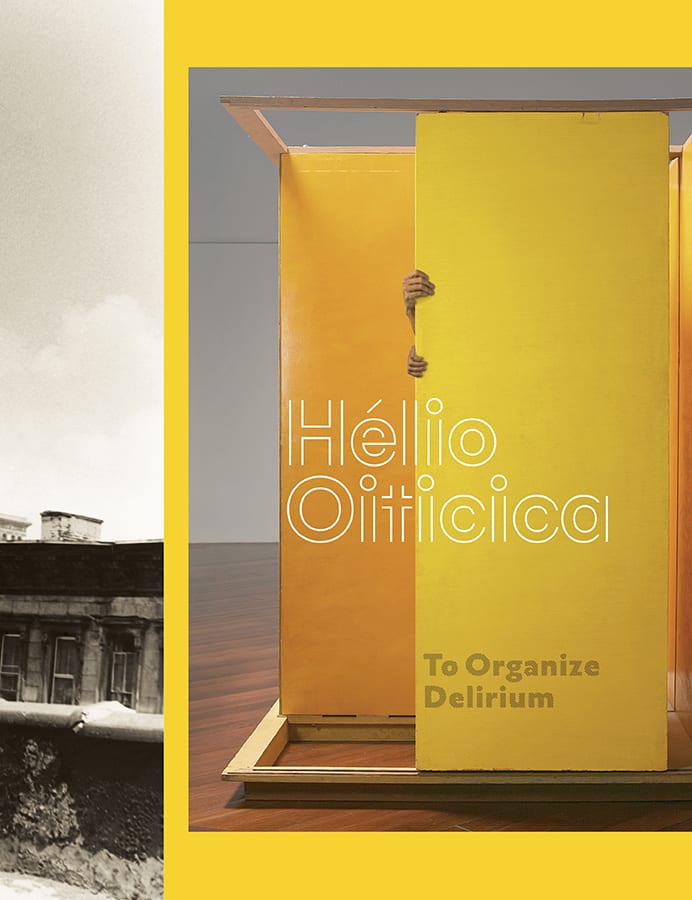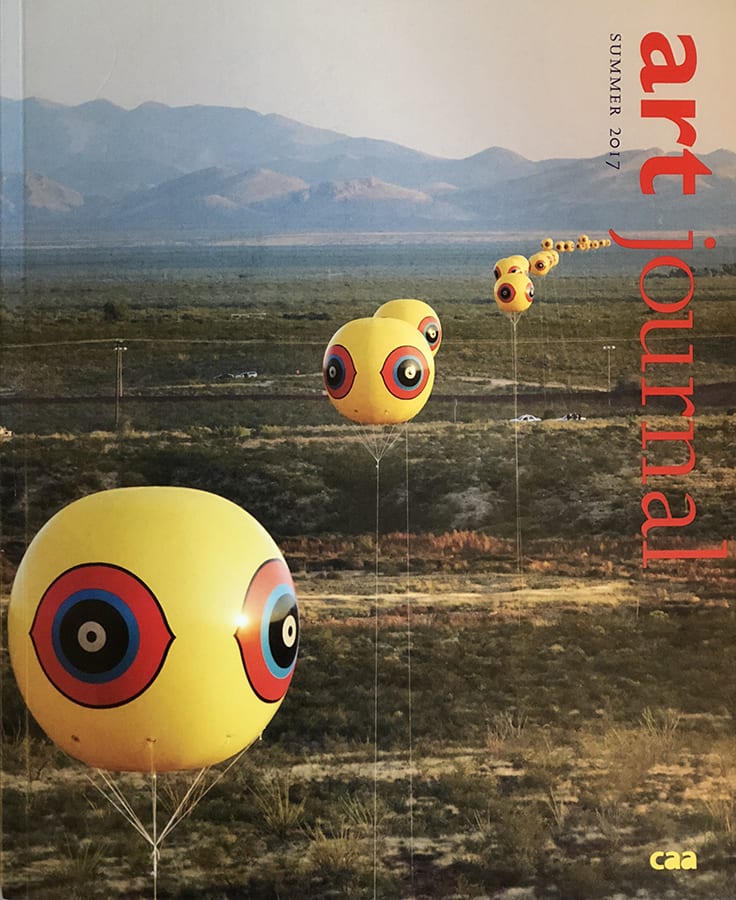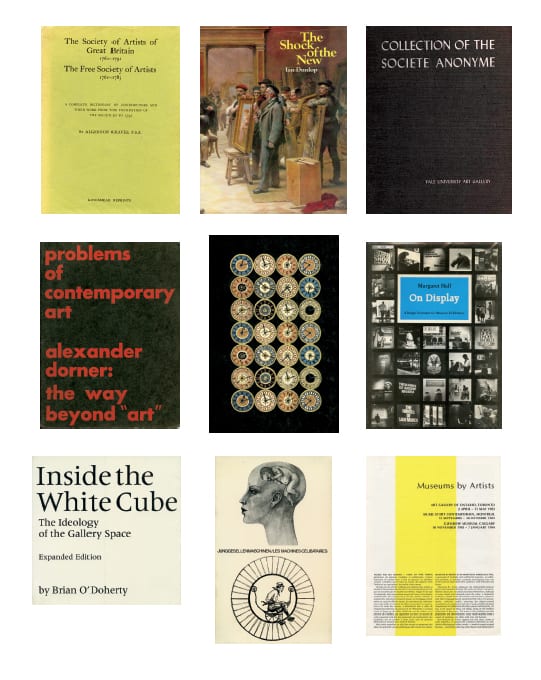Stephanie Sparling Williams reviews Uri McMillan’s Embodied Avatars: Genealogies of Black Feminist Art and Performance, and Malik Gaines’s Black Performance on the Outskirts of the Left: A History of the Impossible
Category: From Art Journal
The Power of Inclusion in Donald Judd’s Art: Observations by an Artist
Gail Hastings executes a close formal reading of Donald Judd’s sculpture Untitled (DSS 33), as well as the “unity that Judd’s space champions in us”
Chickens, Saints, and Corpses: Endurance Art in the United States
Dominic Johnson reviews Long Suffering: American Endurance Art as Prophetic Witness by Karen Gonzalez Rice
“I WAS HERE BUT I DISAPEAR”: Ivanhoe “Rhygin” Martin and Photographic Disappearance in Jamaica
As the latest addition to the Afrotropes series, Krista Thompson reflects on the extensive photographic and cultural legacy of Ivanhoe “Rhygin” Martin and the circulation of images in Jamaica and beyond
Exchange: Geeta Kapur, Saloni Mathur, and Rachel Weiss
Geeta Kapur puts forth a thirteen-part text, “Proposition Avant-Garde: A View from the South,” with critical responses by Saloni Mathur and Rachel Weiss
Health as a Means of Access
Sara Reisman reflects on the ways in which artists and institutions consider (or disregard) how individuals with disabilities access their work
Afrotropes: A User’s Guide
Huey Copeland and Krista Thompson sketch the concept of the afrotrope, a term they have developed over the past decade to describe “those recurrent visual forms that have emerged within and become central to the formation of African diasporic culture and identity”
Naturalcultural Wonders to Anthropocene Disasters: A Bibliography for Possibility Aesthetics
Andrew Yang shares a “transdisciplinary cluster” of works that engage the concept of the Anthropocene. When it comes to climate change, Yang asks, “Which we is responsible, or most at risk? What sorts of people, organisms, and entities does we invite or exclude?”
In Conversation with Marie Watt: A New Coyote Tale
By Marie Watt
Marie Watt first encountered Joseph Beuys’s work as a college student studying abroad. While working on an MFA at Yale, she wrote a reflection on the artist’s I Like America and America Likes Me from the perspective of Coyote, for a course taught by the art historian Romy Golan
How to Organize Delirium?
By Camila Maroja
Camila Maroja reviews the exhibition and catalogue, Hélio Oiticica: To Organize Delirium
2017: Indigenous Futures
By Kate Morris and Bill Anthes
On November 15, 2016, a “National Day of Action,” demonstrators in cities from Los Angeles to New York took to the streets in support of the efforts of the Standing Rock Sioux to block construction of the Dakota Access oil pipeline (DAPL). According to tribal leaders, the presence of the pipeline constitutes a dire threat to the tribe’s water supply, and will desecrate scores of sacred, historical, and cultural sites along its intended 1,172-mile route
The Prehistory of Exhibition History
By grupa o.k. (Julian Myers and Joanna Szupinska)
Art history has long included studies of exhibitions as episodes or turning points within more expansive narratives. Such moments have opened art histories based in the studio, or among the members of a small, bohemian circle, to a larger social field that includes politics, audience, and market, before returning to the private or small-group interactions that have equally served to drive art’s internal means

